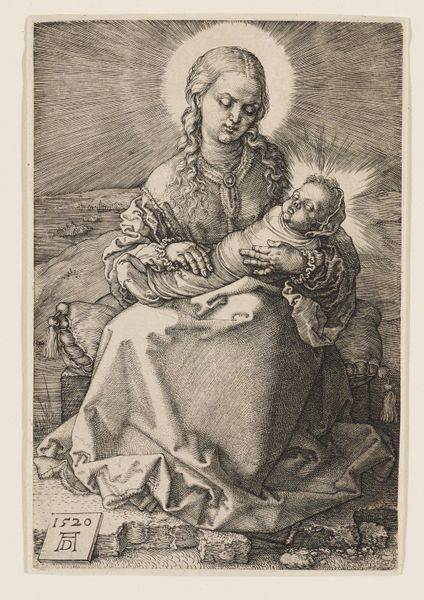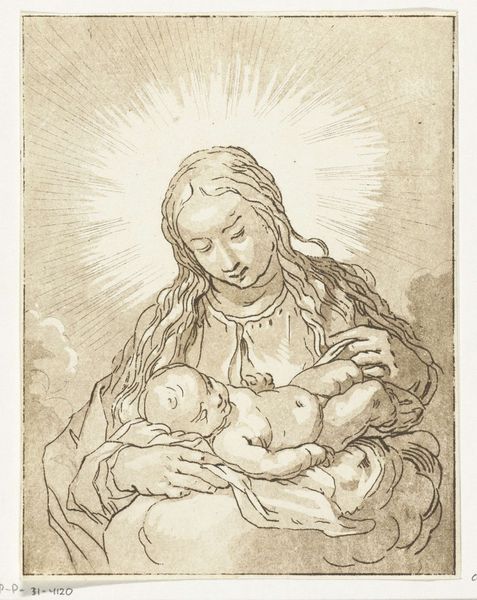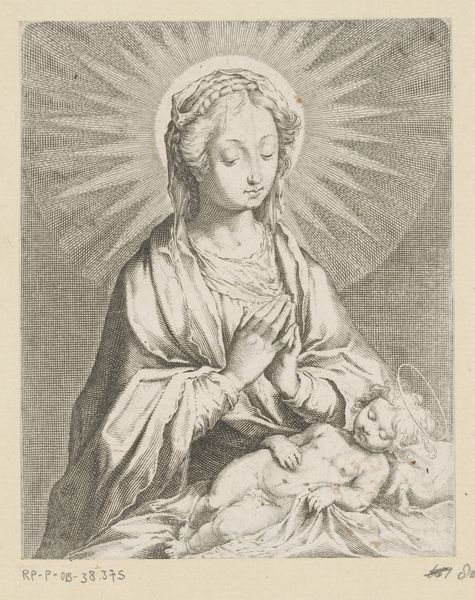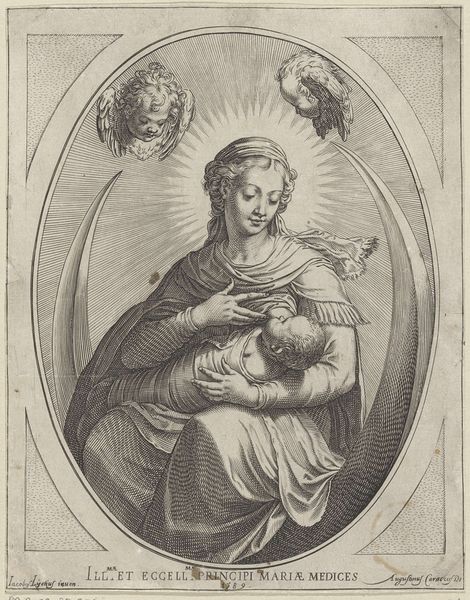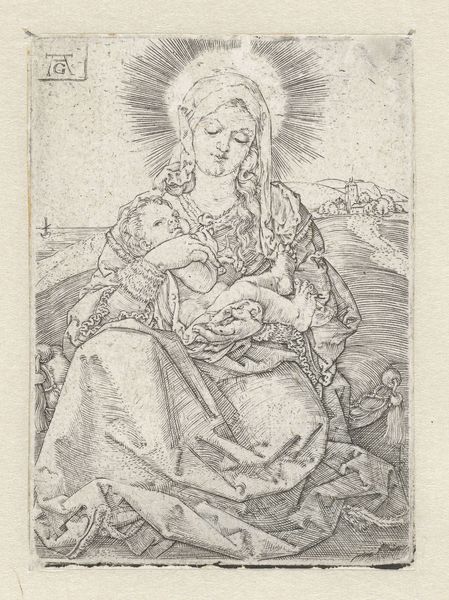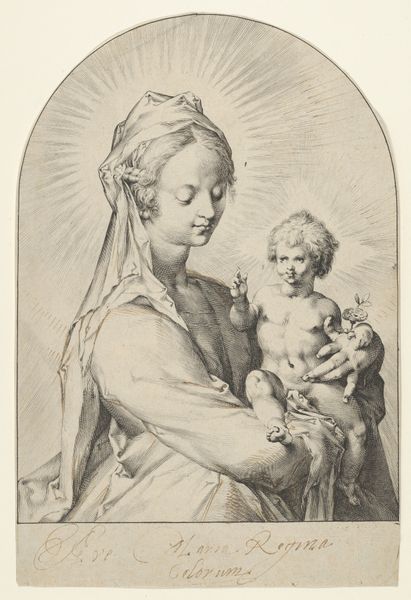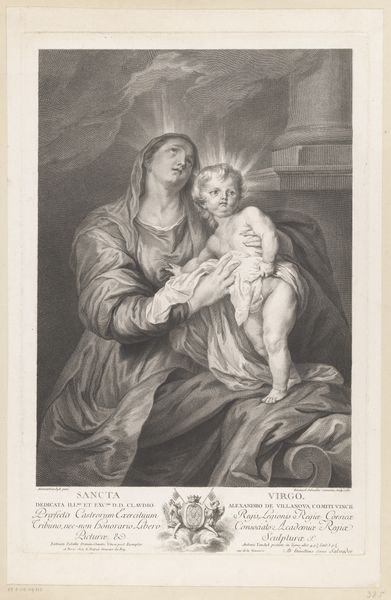
print, engraving
#
medieval
# print
#
figuration
#
line
#
history-painting
#
engraving
Dimensions: height 200 mm, width 152 mm
Copyright: Rijks Museum: Open Domain
Anthonie van den Bos created this image of Mary and child using etching, a printmaking process, sometime in the late 18th or early 19th century. The image begins its life as a metal plate, likely copper or zinc. The artist covers the plate with a waxy, acid-resistant ground, then draws the composition, removing the ground and exposing the metal beneath. Next, the plate is submerged in acid, which bites into the exposed lines, creating grooves. Ink is then applied to the plate, filling these grooves. Finally, the plate is pressed onto paper, transferring the ink and image. Notice the fine lines and delicate shading, achieved by varying the depth and density of the etched lines. The halo effect is created by a radial arrangement of these lines. Etching, unlike painting or sculpture, is a reproductive medium, meaning that multiple identical impressions can be made. This allows for wider distribution of imagery, making art more accessible to a broader audience, but also creating a demand for skilled artisans in a growing print industry. Considering materials, making, and context allows us to fully appreciate the cultural significance of this artwork, and challenges traditional distinctions between fine art and craft.
Comments
No comments
Be the first to comment and join the conversation on the ultimate creative platform.
